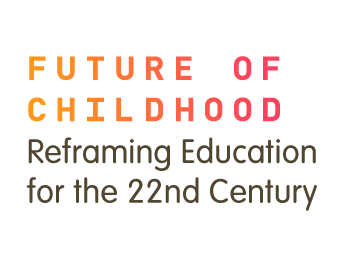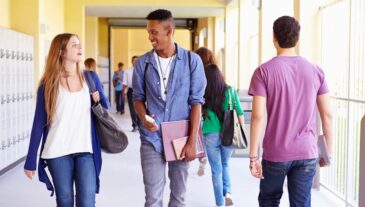This post was originally published on GettingSmart.com

Across the United States, children are returning to school. For some, it will be their first time since March 2020. The past year and a half has been a challenging, if not devastating, disruption for families, teachers, and administrators. Now we’re all hungry for a return to normal.
But at what cost? Normal, for vast numbers of American students, is not something to which we should aspire to return. For too long, our society has been willing to ignore persistent inequities—specifically, the lopsided distribution of education resources that the pandemic amplified so clearly. We’ve seen the disproportionate suffering of youth who were already marginalized by poverty and systemic racism. We’ve watched as schools literally became the means of survival for the most disenfranchised children.
Still, many pundits, education journalists, experts, and thought-leaders have already returned to a perspective that reifies the past. When they’re not writing about mask mandates, they offer a steady stream of op-eds about learning loss and the need for remediation. This is precisely the language that has long framed an ineffective, paternalistic approach to education inequality.
 What they’re missing is that, for underserved youth, returning to these conversations means the same old discrepancies in achievement and the diminished futures they foretell. For all children—regardless of their race or socio-economic status—it means a school experience that fails to adequately prepare individuals to survive and thrive in a world threatened by a climate crisis, rising authoritarianism, partisan political division, misinformation, tribalism, and nationalism.
What they’re missing is that, for underserved youth, returning to these conversations means the same old discrepancies in achievement and the diminished futures they foretell. For all children—regardless of their race or socio-economic status—it means a school experience that fails to adequately prepare individuals to survive and thrive in a world threatened by a climate crisis, rising authoritarianism, partisan political division, misinformation, tribalism, and nationalism.
In April, the Joan Ganz Cooney Center at Sesame Workshop and the Center for Global Education at Asia Society convened more than 40 top education leaders—including researchers, administrators, reformers, philanthropists, policymakers, EdTech developers, and more—to identify priorities for establishing a new education mindset for the 22nd century. But we wanted to avoid the old debates, which have defined the conversation about teaching and learning for more than a century: “hard” vs. “soft” skills, rigorous vs. playful, STEM vs. SEL. Instead, we wondered: What education system do we need not only to prepare for the future but also to ensure the human race has a future?
Key to this conversation was the idea that it is time to rethink the ways we center young people in their education. How can we reframe the conversations about learning, community support, and policies that will really allow our children to flourish and reach their full intellectual and human potential? We established three recommendations to help teachers, parents, caregivers, administrators, funders, and policymakers think differently about what normal can and should be.
First, if students don’t understand themselves, they can’t understand others. And without empathy, there is no working together, no collective prosperity. Let’s move beyond the tired question of skills vs. personal development. Education should not be premised on a view of the child as either a future worker or an individual in need of social and ethical development. We all know that a fully realized human being is both. Skills and values are interconnected. Productive civic engagement and economic contribution require autonomy, agency, and reflexivity.
Second, we should embrace the notion that learning happens everywhere, all the time. Recent research on youth during the pandemic shows that given the opportunity and the right support, kids take learning into their own hands—when kids use technology and digital media, they often choose how-to videos on TikTok or deep dives on YouTube. There’s an alternative to the “pandemic learning loss” narrative, a narrative that relies on a narrow and problematic understanding of what constitutes “learning.” The new normal needs to move beyond the false division between formal and informal learning, school-based and self-directed learning. Let’s replace this outdated way of thinking with a new model of education ecosystems which embrace, rather than avoid, nonlinear and connected modes of communication.
Third, let’s rethink where the power and responsibility for education lies. We need a rigorously inclusive model of “local education authority” that enables kids and their communities to determine their future. Let’s move beyond school district bureaucracies and the massive disparities based on property tax revenues they represent. The governance of education systems is not just a safety net accounting for individual achievement, but also as a springboard for the kinds of action that today’s kids innately know they want to take: to make the world safer, healthier, more embracing of difference, and more equitable. Only by sharing power and responsibility for education, in a radically cooperative fashion, can we transition our children to be the makers of a 22nd century worth living in.
Taking the comfortable path of least resistance back to normal imperils our future. We need a new, inclusive approach to education for the 22nd century. Our children’s future and the future of the human race depend on it.
Tony Jackson leads Asia Society’s work in education which strives to enable all students to graduate high school prepared for college, for work in the global economy, and for 21st-century global citizenship.
Jordan Shapiro is a Senior Fellow with Joan Ganz Cooney Center at Sesame Workshop.

